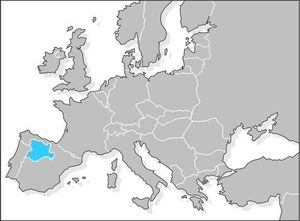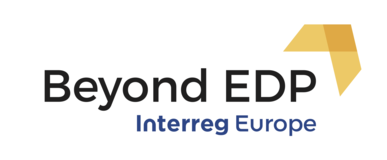Castilla y León is the most extensive Spanish region and one of the largest of the European Union (with a regional territorial area of 94,224 km2). It's size and geographic situation (Castilla y León borders on nine regions in Spain and Portugal) makes this region a important communication hub at the Spanish and European level (Portugal- Spain – France).

During the past few decades, the Economy and the Science-Technology-Business-Society system of Castilla y León have undergone an extraordinary modernisation, which significantly contributed to a convergence process towards National and EU standards. This process however has been slowed down during the past few years, mainly due to the effects of the financial and economic crisis. Smart Specialisation introduces a new perspective to improve the scenario in the next few years, based on a participatory Entrepreneurial Discovery Process.
The regional GDP of Castilla y León in 2015 was the 5.0% of the national GDP1. Its itemization showed a very powerful service sector (61.3%) in comparison with other sectors of activity, which hold less weight in the economy: industry and energy, with 20.0%; construction, holding 5.6%; and agriculture at 4.0%. In 2016, the number of business in Castilla y León was 161,364. Micro-enterprises dominate in the Castilla y León business structure2.
According to the data published by EUROSTAT3, Castilla y León reduced in approximately 18 percentage points the gap in GDP with the European Union since the incorporation of Spain to the European Union in 1986 until 2009. Due to these rates of growth, Castilla y León left the condition of objective 1 region in the European Union, becoming objective “employment and competitiveness” region as of the 1st of January 2007, and being in the group of “More developed regions” for the period 2014-2020. However, the gap in GDP has been increased again in 9 points since 2009 to 2014.
The modernization of the economy and the need of a continuous improvement of the competitiveness of the industrial tissue have traditionally made R&D, innovation and the information society one of the key issues for the region.
Castilla y León’s Science-Technology-Business-Society System has been built in recent decades from a legal basis, institutional architecture and a series of planning elements. All these efforts have led to a system in which businesses, universities, research centres, and knowledge transfer centres have generated gradual convergence with the national average in terms of performance indicators. However, some indicators, including Gross Domestic Expenditure in R&D (GERD) show that this convergence process has slowed down during the past few years.
Smart Specialisation is considered a key for improving this scenario in both the Economy and the Science-Technology-Business-Society system, because it is based on an identification of the technological patterns of knowledge that are potentially generators of competitive advantages through a participatory Entrepreneurial Discovery Process.
References:
- 1 National Institute of Statistics
- 2 Central Business Register, National Institute of Statistics.
- 3 EUROSTAT









